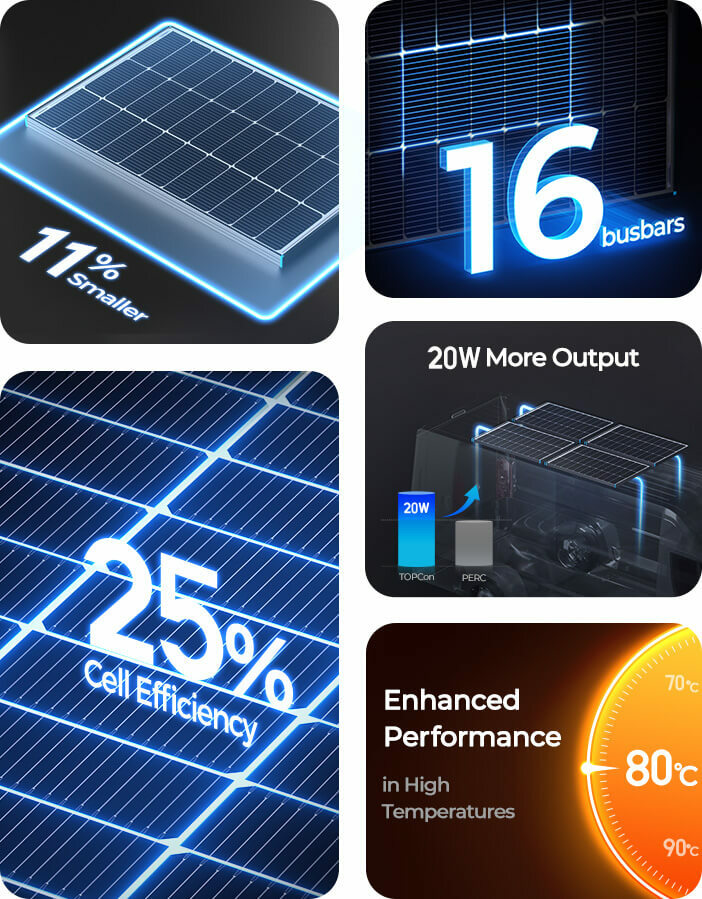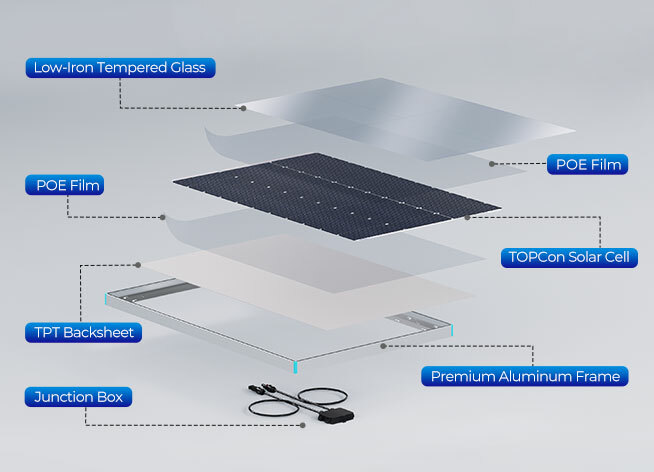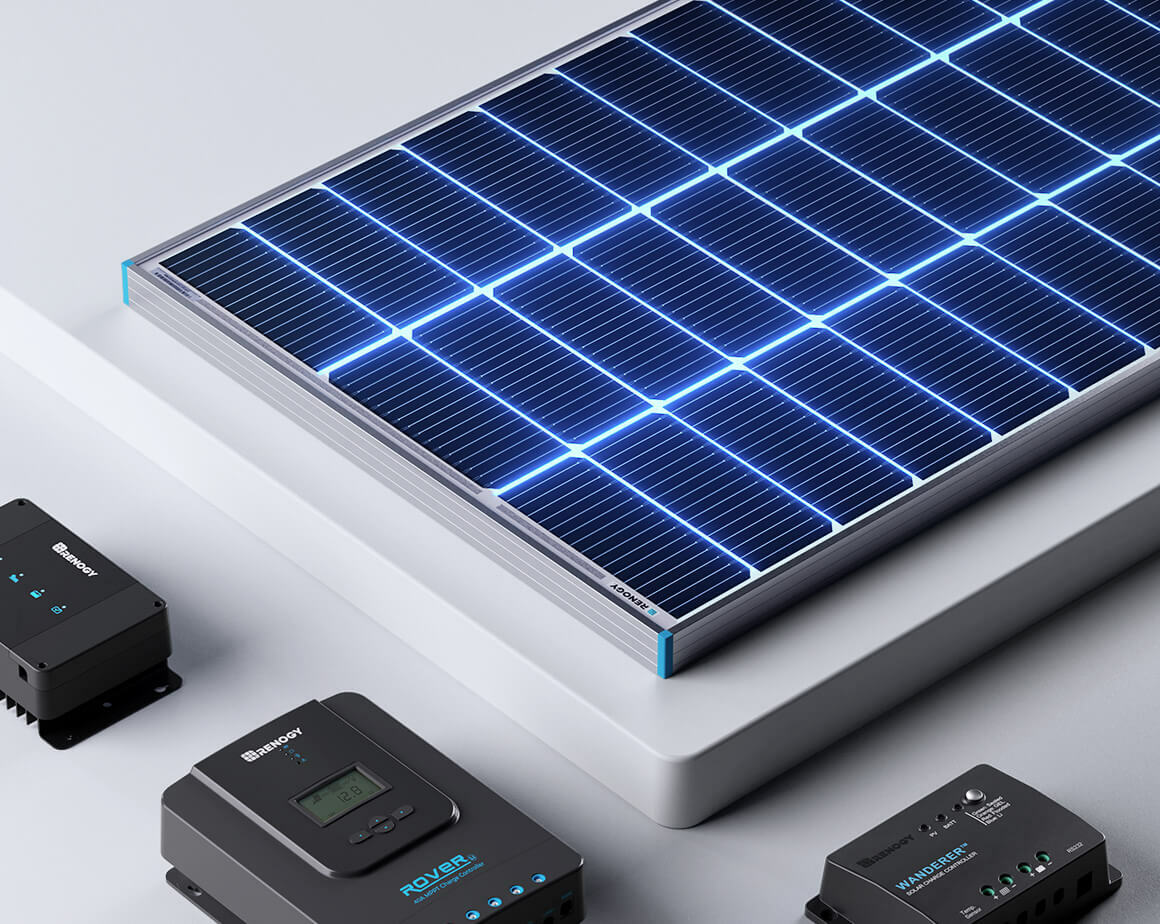



















Package Includes
- 1 x 100w N-type Solar Panel
- 1 x User Manual
- 1 x Warranty Card
| RENOGY 200w EFLEX portable solar panel | |||
|---|---|---|---|
| Max Power at STC | 200 W | Open Circuit Voltage | 23.40V |
| Short Circuit Current | 10.50A | Optimum Operating Voltage | 20.16V |
| Optimum Operating Current | 9.92A | Cell Efficiency | >22.6% |
| Operating Temperature | ’14°F to 149°F(-10℃ to +65℃) | Dimensions | 25.0 x 21.1 x 2.2 in / 635 x 536 x 55 mm(fold),94.1 x 21.1 x 0.2 in / 2390 x536 x 4 mm (unfold) |
| Weight | 17.6 lbs. / 8.0 kg | ||
| Warranty | Material and workmanship warranty | 1 | |
| Certifications | CE and RoHS compliant, FCC, Manufactured in a Certified ISO 9001 Facility, CA65, PES | YES | |
To set up an off-grid solar power system, you’ll need a solar panel connected to a charge controller to regulate the current and a battery to store the generated electricity. Additionally, adapter kit cables are required to connect the solar panel(s) to the charge controller, and tray cables are necessary to link the charge controller to a deep-cycle battery. These components work together to ensure a reliable and efficient power system.
On-grid systems are solar power setups connected to the electrical grid, allowing you to draw power from the grid when needed. In contrast, off-grid systems operate independently of the grid, storing the power they generate for later use. This makes off-grid systems ideal for areas without reliable grid access and ensures they remain unaffected by grid blackouts.

































